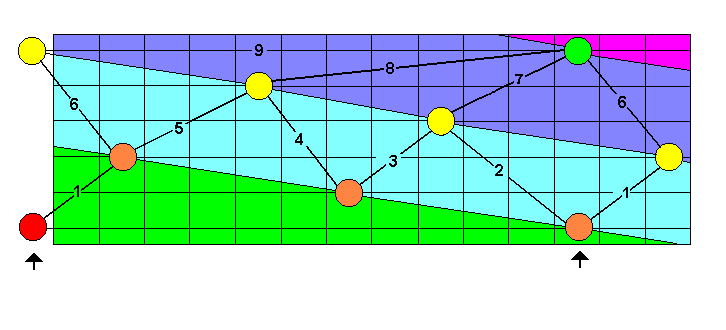Octave Groups on the Guitar
Exercise
Try printing out the 24 fret map, (the bottom diagram) on the All the Notes page. Draw a line from every root, E in this case, to the next root higher. Each one of these form an octave pair or groups. Can you find them all? Some are very far apart.
Octave groups are pairs of root notes. By learning where they all are, you will be able to better understand the whole fretboard when studying scales or chords. I have identified 9 practical groups below. Each pair has a lower root, and an upper root one octave higher. For example, Octave Group 1 has the lower root on the E string, and the upper root 2 strings up, and 2 frets to the right. Octave Group 2 also has the lower root on the E string, while the upper root is 3 strings up and 3 frets to the left. Octave groups 8 and 9 are more general forms, while groups 1 through 7 always occur exactly in the same set of strings.
Group 8 is defined by moving from any root, to the next root higher, on the next string up. Between the G and B strings the distance is one fret longer because of the way we tune. So perhaps you can think of this exception as group 8b or Group 10 if you prefer. The numbers are not important, just the meaning. Group 9 is simply moving one ocatave in a straight line, along any string. Groups 1 through 7 always occur on the same sets of strings. This arrangement holds true for any root note. That is the pattern below can be shifted left or right on any note. Below the roots of E are shown as are the colored regions they bound.
